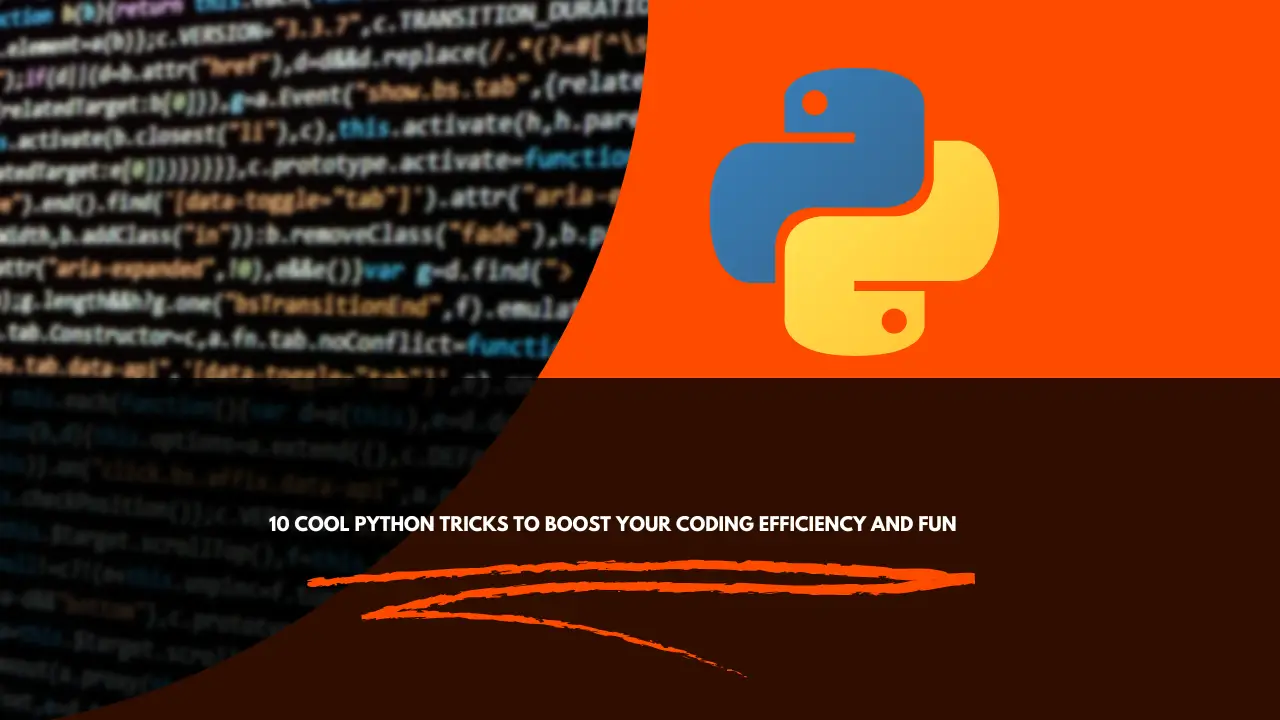
Table of Contents
Python is known for its simplicity and elegance, making it a popular choice among developers. Whether you are a beginner or an experienced programmer, there are always new tricks to learn that can make your coding more efficient and enjoyable. Here are ten cool Python tricks you might find useful.
1. List Comprehensions: Create Lists in a Single Line
List comprehensions are a concise way to create lists. Instead of using loops, you can generate a list in a single line of code. This not only makes your code cleaner but also improves performance.
Example:
squares = [x**2 for x in range(10)]
print(squares) # Output: [0, 1, 4, 9, 16, 25, 36, 49, 64, 81]
Explanation:
In this example, squares is a list of the squares of numbers from 0 to 9. The list comprehension iterates through the range and computes the square for each number, all in one line.
2. Unpacking Values: Easily Unpack Tuples or Lists
Unpacking is a simple yet powerful feature in Python that allows you to assign the values of a tuple or a list to multiple variables simultaneously.
Example:
a, b, c = (1, 2, 3)
print(a, b, c) # Output: 1 2 3
Explanation:
Here, we unpack the tuple (1, 2, 3) into the variables a, b, and c. This eliminates the need for indexing and makes the code cleaner.
3. Using enumerate(): Get Both Index and Value in a Loop
When iterating through a list, you often need both the index and the value. The enumerate() function provides an elegant solution to this problem.
Example:
for index, value in enumerate(['a', 'b', 'c']):
print(index, value)
Output:
css
0 a
1 b
2 c
Explanation:
In this example, enumerate() returns both the index and the corresponding value, allowing you to access both without the need for manual indexing.
4. Swapping Variables: Swap Values Without a Temporary Variable
In Python, you can swap the values of two variables without using a temporary variable, making your code cleaner.
Example:
a, b = 5, 10
a, b = b, a
print(a, b) # Output: 10 5
Explanation:
This trick uses tuple unpacking to swap the values of a and b in a single line.
5. Merging Dictionaries: Combine Dictionaries in Python 3.9 and Above
Python 3.9 introduced a simple syntax for merging dictionaries using the | operator.
Example:
dict1 = {'a': 1, 'b': 2}
dict2 = {'b': 3, 'c': 4}
merged = dict1 | dict2
print(merged) # Output: {'a': 1, 'b': 3, 'c': 4}
Explanation:
The merged dictionary retains values from the second dictionary when keys overlap, resulting in a clean and efficient merging process.
6. Using zip(): Iterate Over Multiple Lists in Parallel
The zip() function allows you to iterate over multiple lists (or any iterable) in parallel, creating tuples of corresponding elements.
Example:
names = ['Alice', 'Bob', 'Charlie']
ages = [25, 30, 35]
for name, age in zip(names, ages):
print(name, age)
Output:
Alice 25
Bob 30
Charlie 35
Explanation:
In this example, zip() pairs each name with its corresponding age, allowing for easy iteration.
7. Lambda Functions: Create Small Anonymous Functions
Lambda functions provide a quick way to create small, one-line anonymous functions in Python. They are especially useful for short, throwaway functions.
Example:
add = lambda x, y: x + y
print(add(5, 3)) # Output: 8
Explanation:
In this case, we define a lambda function add that takes two arguments and returns their sum. It can be used just like a regular function.
8. Using *args and **kwargs: Handle Variable-Length Arguments in Functions
When defining functions, you can use *args and **kwargs to accept variable-length arguments, allowing for more flexible function definitions.
Example:
def my_function(*args, **kwargs):
print("Arguments:", args)
print("Keyword arguments:", kwargs)
my_function(1, 2, 3, name='Alice', age=25)
Output:
Arguments: (1, 2, 3)
Keyword arguments: {'name': 'Alice', 'age': 25}
Explanation:
Here, *args collects positional arguments as a tuple, while **kwargs collects keyword arguments as a dictionary, enabling dynamic function calls.
9. Using defaultdict: Simplify Dictionary Creation with Default Values
The defaultdict class from the collections module provides a convenient way to initialize a dictionary with default values.
Example:
from collections import defaultdict
d = defaultdict(int) # Default value is 0
d['a'] += 1
print(d['a']) # Output: 1
print(d['b']) # Output: 0 (default value)
Explanation:
In this example, defaultdict automatically initializes missing keys with a default value (0 in this case), simplifying dictionary management.
10. F-Strings: Format Strings Easily (Python 3.6 and Above)
F-strings are a powerful and intuitive way to format strings in Python. They allow you to embed expressions directly within string literals.
Example:
name = 'Alice'
greeting = f'Hello, {name}!'
print(greeting) # Output: Hello, Alice!
Explanation:
By prefixing the string with f, you can easily embed variables and expressions, making your code cleaner and more readable.
11. Using with for File Handling: Automatically Manage File Resources
The with statement simplifies file handling by automatically managing resources, ensuring files are closed properly after their block is executed.
Example:
with open('file.txt', 'r') as file:
content = file.read()
print(content)
Explanation:
In this case, the with statement takes care of opening and closing the file, reducing the chance of errors related to resource management.
12. Set Operations: Easily Perform Mathematical Set Operations
Python sets provide an efficient way to perform mathematical operations like union, intersection, and difference.
Example:
set1 = {1, 2, 3}
set2 = {2, 3, 4}
union = set1 | set2 # {1, 2, 3, 4}
print(union)
Explanation:
In this example, we use the | operator to compute the union of set1 and set2, demonstrating the power and simplicity of set operations in Python.
10 Cool Python Tricks to Boost Your Coding Efficiency and Fun
These ten Python tricks can significantly enhance your programming experience, making your code cleaner, more efficient, and even more fun to write. Whether you’re working on simple scripts or complex applications, incorporating these techniques can help you become a more effective Python developer. Happy coding!







selamat datang di situs slot terbaik, https://sih3.kepriprov.go.id/ daftar
great articlepafiagamkota.org Terpercaya
Thank you for your sharing. I am worried that I lack creative ideas. It is your article that makes me full of hope. Thank you. But, I have a question, can you help me?
selamat datang di bandar togel online terbaik, situs togel resmi dan terpercaya
great articlesitus togel Terpercaya